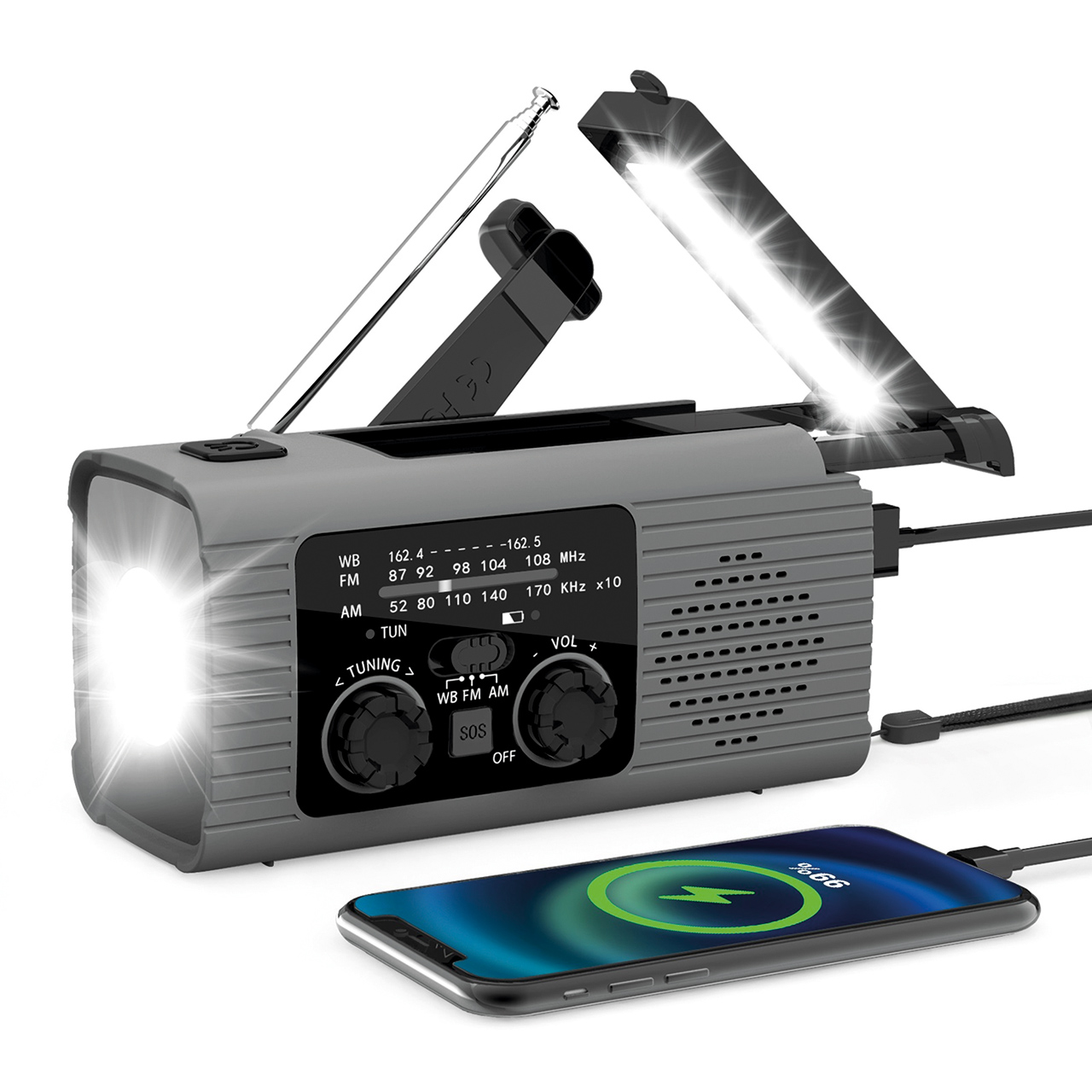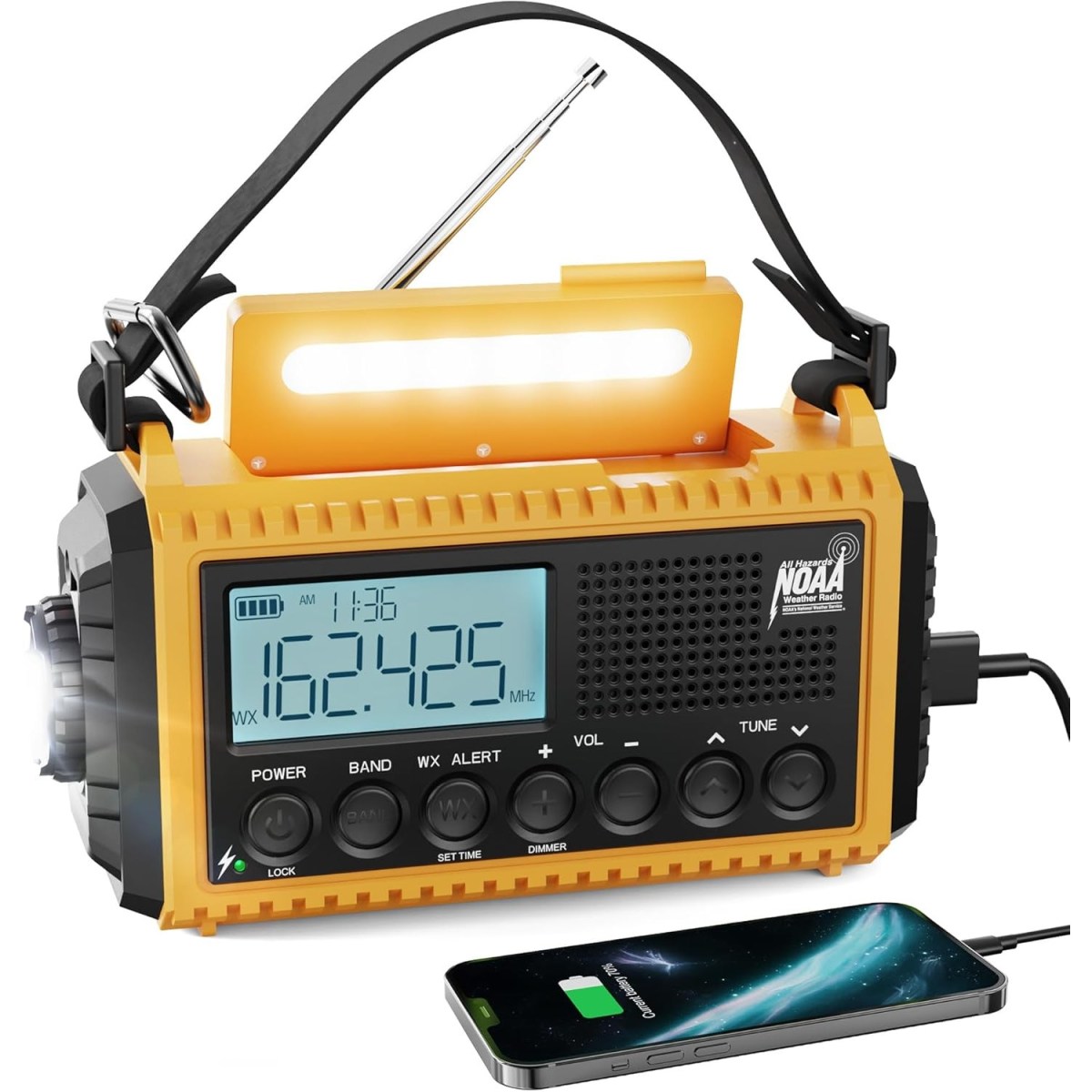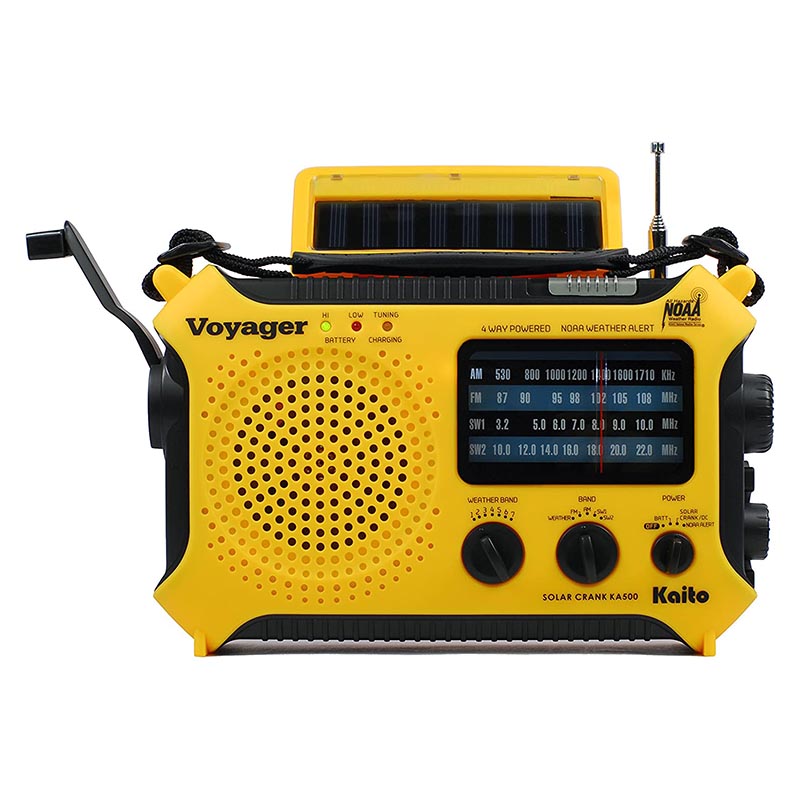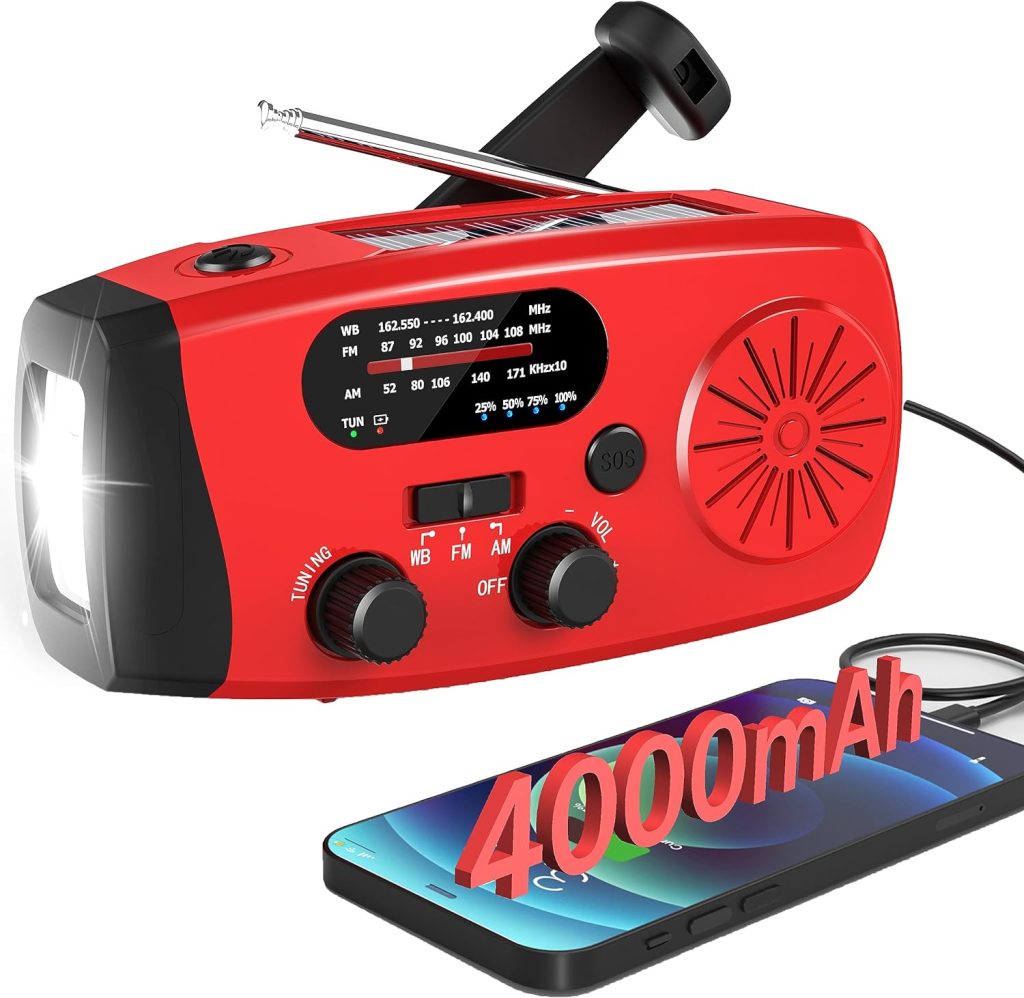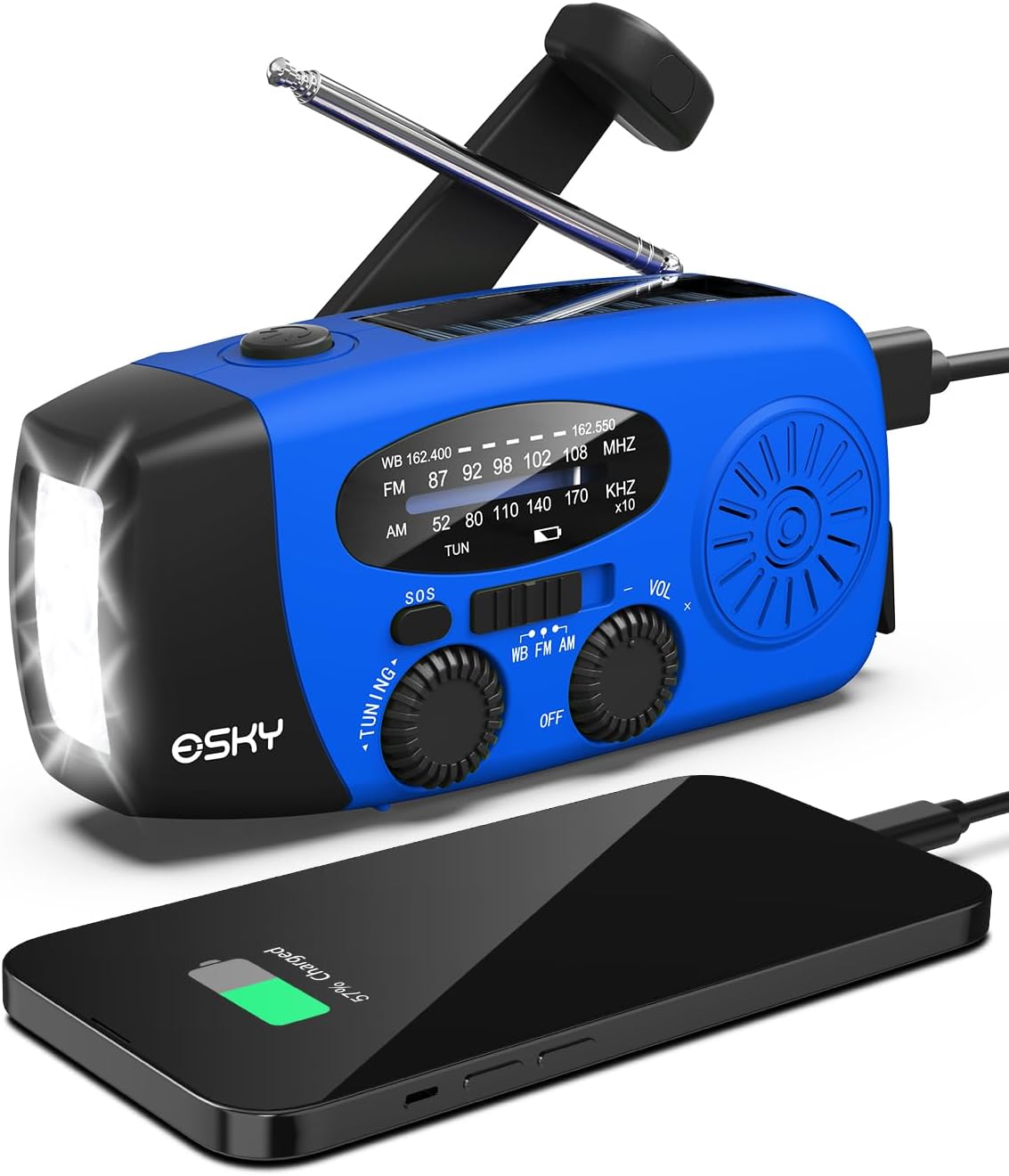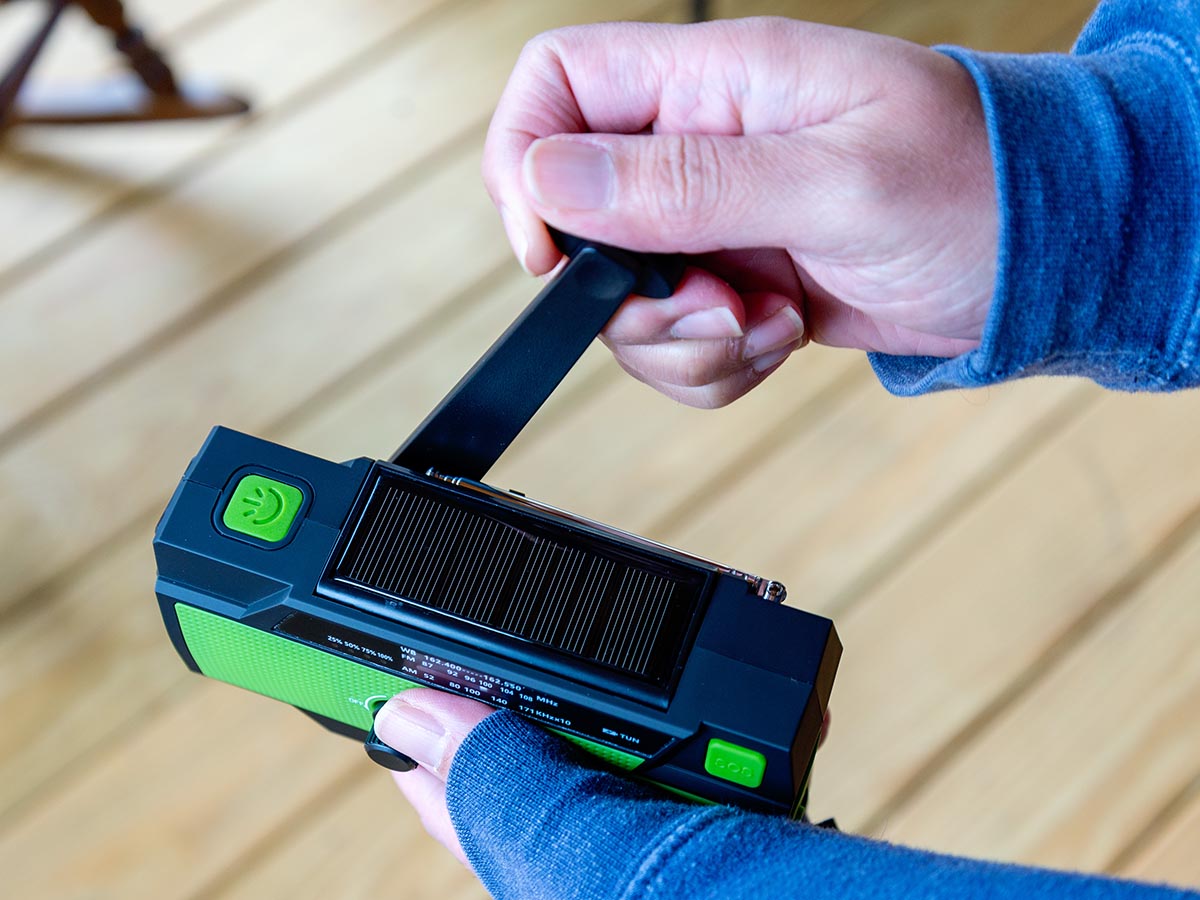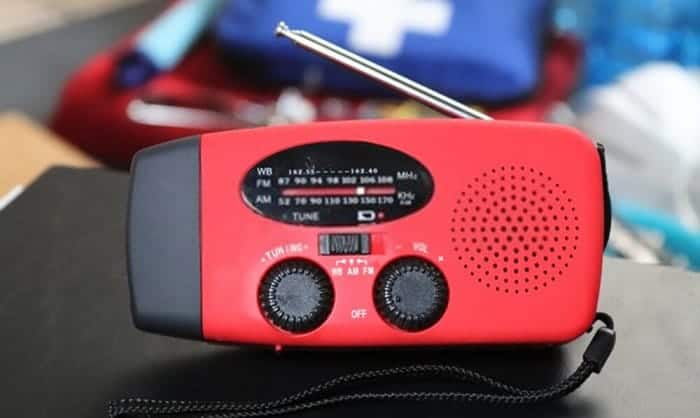What Is A Hand Crank Radio

In a world increasingly reliant on digital connectivity, the fragility of our power grids and communication networks becomes glaringly apparent during natural disasters and emergencies. When the lights go out and cell towers fail, a simple yet vital piece of technology can become a lifeline: the hand crank radio.
A hand crank radio, also known as a dynamo radio or emergency radio, is a self-powered receiver that operates without batteries or access to electrical grids. It is a device capable of receiving radio signals, typically AM/FM and weather bands, powered by human-generated kinetic energy through a hand crank mechanism, making it an invaluable tool for accessing information during power outages and emergencies.
Understanding the Mechanics
The core principle behind a hand crank radio is the conversion of mechanical energy into electrical energy. Turning the hand crank rotates a small internal generator, also known as a dynamo, which then produces electricity.
This electricity powers the radio's internal circuitry, enabling it to receive and amplify radio signals. The efficiency of the generator and the design of the radio's components determine how much cranking is required to operate the device effectively.
Most modern hand crank radios also incorporate a rechargeable battery that can be charged by the hand crank, allowing for extended use after the cranking has stopped. This battery serves as a buffer, providing a more consistent power supply and reducing the need for continuous cranking.
Essential Features and Functionality
Beyond the basic radio functionality, many hand crank radios offer additional features that enhance their utility in emergency situations. These features often include a built-in flashlight, typically utilizing LED technology for energy efficiency and long lifespan.
Another common feature is a USB charging port, allowing users to charge small electronic devices such as mobile phones, albeit slowly. Some models also include a siren or alarm function to signal for help.
The specific radio bands supported are also important to consider. Most hand crank radios offer AM and FM reception, but those designed for emergency preparedness often include weather band reception, allowing users to receive crucial weather alerts from the National Oceanic and Atmospheric Administration (NOAA).
Benefits in Emergency Situations
The primary benefit of a hand crank radio lies in its self-sufficiency. It eliminates the dependence on external power sources like batteries or wall outlets, which can be unreliable or unavailable during emergencies.
During hurricanes, earthquakes, or other disasters that disrupt infrastructure, a hand crank radio can provide access to critical information, including emergency broadcasts, weather updates, and instructions from authorities. This information can be crucial for making informed decisions and ensuring personal safety.
Furthermore, the built-in flashlight and USB charging capabilities can provide additional support when other power sources are unavailable. They are truly valuable to survival.
Choosing the Right Hand Crank Radio
Selecting the right hand crank radio requires careful consideration of several factors. Durability is paramount, as the radio must be able to withstand harsh conditions and potential physical impact. Look for models with robust construction and weather-resistant casings.
The efficiency of the hand crank mechanism is also important. Some radios require less cranking to generate power, making them easier to use for extended periods. Read reviews and compare specifications to find a model that balances power output with ease of use.
Consider the additional features offered, such as weather band reception, flashlight brightness, and USB charging capacity. Evaluate which features are most important for your specific needs and priorities.
Criticisms and Limitations
While hand crank radios offer numerous benefits, they are not without limitations. The amount of power generated by hand cranking is limited, meaning that the radio's performance may be less than that of a battery-powered or electrically powered device.
Cranking can also be physically demanding, especially for extended periods. Users with limited mobility or physical strength may find it challenging to operate the radio effectively.
The quality of the radio's reception can also vary depending on the model and the surrounding environment. Factors such as distance from radio transmitters and interference from other electronic devices can affect the clarity and strength of the signal.
The Future of Hand Crank Radios
Despite the proliferation of digital communication technologies, hand crank radios remain relevant and valuable tools for emergency preparedness. Ongoing innovations are focused on improving the efficiency of the hand crank mechanisms, increasing battery capacity, and incorporating new features such as solar charging capabilities.
Some manufacturers are also exploring the integration of hand crank radios with other emergency devices, such as portable water filters and first-aid kits, to create comprehensive emergency preparedness systems.
The enduring appeal of the hand crank radio lies in its simplicity, reliability, and self-sufficiency. In a world where technology is often dependent on complex infrastructure, the hand crank radio offers a tangible connection to basic survival skills and a reminder of the importance of preparedness.

